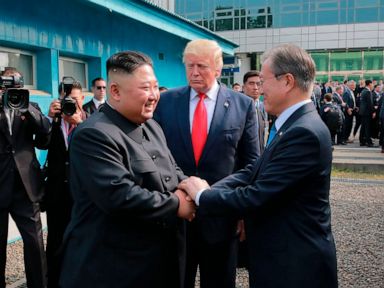
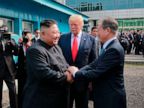

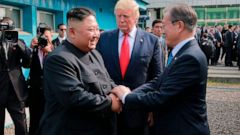
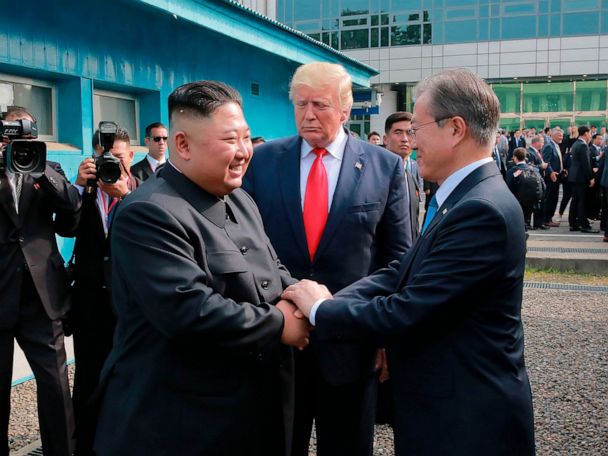
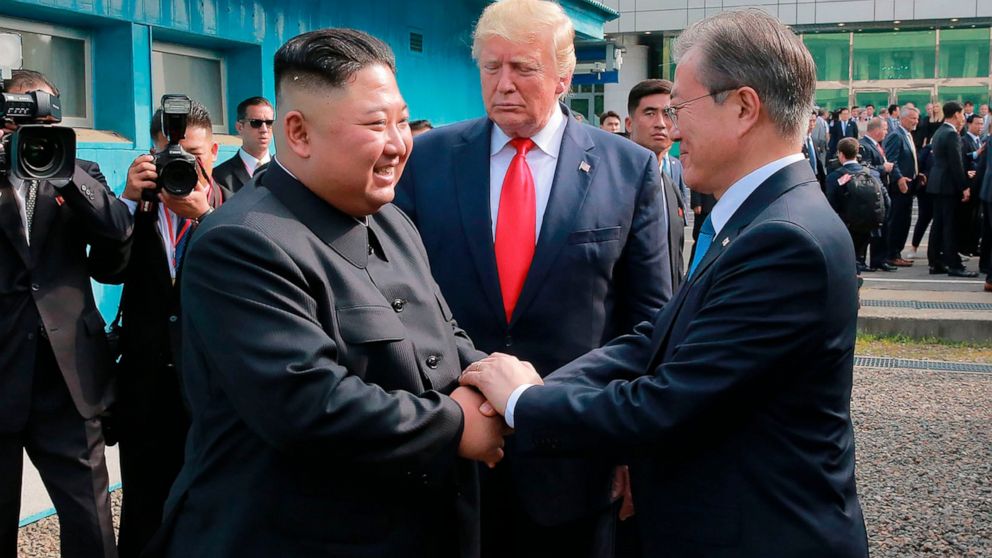

Ending a brief media frenzy, South Korea’s military said it turned out to be a flock of birds that prompted it to launch fighter jets and alert journalists that it had detected an unidentified object flying near the border with North Korea on Monday.
The South’s earlier announcement on the flying object left many media outlets scrambling, with the incident coming a day after U.S. President Donald Trump and North Korean leader Kim Jong Un met at a different portion of the heavily fortified Korean border.
South Korea’s military has been under fire for a possible security gap after a boat carrying four North Koreans arrived undetected recently at a South Korean port. Observers say the South’s military had likely released the inconclusive information about the flying object to media to avoid similar criticism of its surveillance posture.
The South’s Joint Chiefs of Staff had said earlier Monday that its radar found “the traces of flight by an unidentified object” over the central portion of the Demilitarized Zone, a de facto border between the two Koreas.
South Korean media, citing unidentified military officials, quickly speculated that it was likely be a North Korean helicopter flying across the border into South Korea. But pilots of the several fighter jets deployed to the area later found that the object was a group of about 20 birds, a South Korean military official said, requesting anonymity because he wasn’t authorized to speak to reporters on the issue.
South Korea sent North Korea a message about its fighter jets’ launches to avoid unnecessary tensions, the official said.
The DMZ, which was created after fighting ended in the 1950-53 Korean War, is peppered with an estimated 2 million mines and guarded by combat troops, razor wire fences, anti-tank traps and guard posts on both sides. The two Koreas have occasionally traded exchanges of gunfire there, though animosities have eased since North Korea entered talks on its nuclear program.
Sunday’s meeting between Trump and Kim, their third, took place at the border village of Panmunjom, located inside the DMZ. Trump stepped across Panmunjom’s military demarcation line into North Korea with Kim, becoming the first sitting U.S. president to set foot in North Korea. He and Kim then turned back to Panmunjom’s southern part before sitting down for a meeting.
Earlier Monday, South Korea’s government said it hoped the diplomatic momentum created by the latest Trump-Kim meeting would help revive inter-Korean dialogue and engagement that stopped amid an impasse in nuclear negotiations between Washington and Pyongyang.
“Since it’s expected that the nuclear negotiations between Washington and Pyongyang would bounce back, the government will … strengthen its efforts to create a virtuous cycle between inter-Korean relations, denuclearization and North Korea-U.S. relations,” Lee Sang-min, spokesman for South Korea’s Unification Ministry, told reporters.
North Korea’s state media described Kim’s meeting with Trump as “an amazing event” and that both leaders expressed great satisfaction over the result of their talks
The latest Trump-Kim meeting may have created momentum for further diplomacy, including working-level talks aimed at hammering out the terms of a mutually acceptable deal. But experts say it remains unclear whether the negotiations would successfully address the fundamental differences between Washington and Pyongyang that were exposed in a previous summit in Hanoi in February.
North Korea significantly reduced diplomatic activity and exchanges with the South following that summit. North Korea conducted tests of short-range missiles that could potentially threaten the South and demanded that Seoul break away from Washington and resume inter-Korean economic projects held back by U.S.-led sanctions against the North.
Last month, South Korean Defense Minister Jeong Kyeong-doo issued a public apology amid criticism that the country’s military failed to detect a North Korean fishing boat that crossed deep into South Korean waters, about 130 kilometers (80 miles) south of the maritime sea border, before reaching a port in Samcheok uninterrupted. South Korea sent two of the four North Korean fishermen aboard the boat back to the North, while the other two stayed in the South after expressing their desire to defect.
Some experts say the incident occurred because South Korea’s security posture has been weakened under the current liberal government of President Moon Jae-in, which seeks greater rapprochement with North Korea. But others note similar incidents, such as North Korean soldiers fleeing undetected to South Korea via the DMZ, had occasionally happened when South Korea was ruled by conservatives before Moon’s inauguration in 2017.

